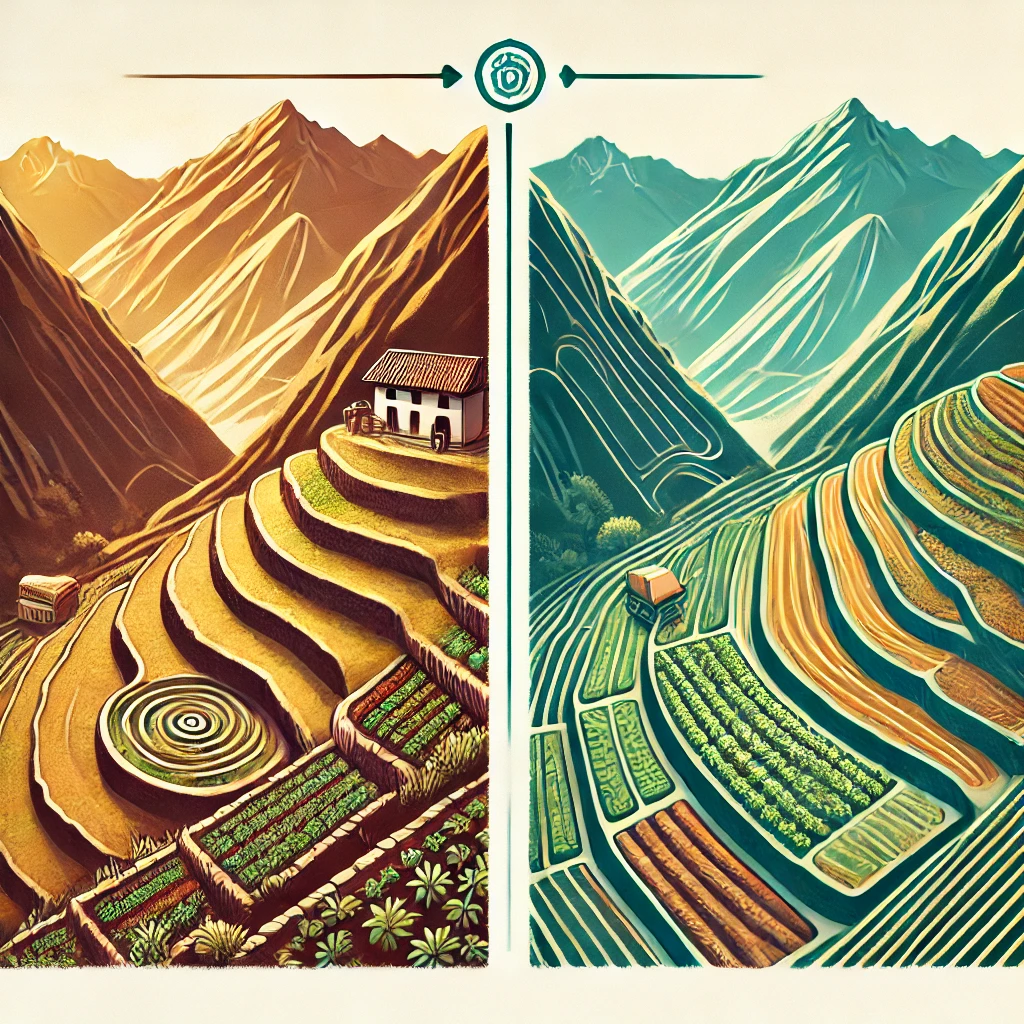Explore innovative terrace farming techniques, learn about crop diversity and rotation, and discover ancient Incan irrigation methods for sustainable agriculture.The Incas, one of the most advanced civilizations in history, left an indelible mark on farming practices that continue to shape modern agriculture. Their remarkable innovations in food production not only sustained their empire but also laid the groundwork for contemporary methods that prioritize sustainability and efficiency. In this blog post, we will explore how the Incas’ terrace farming innovations maximized arable land in the challenging Andean terrain, their strategic approach to crop diversity and rotation that improved soil health and yields, and their sophisticated irrigation techniques that optimized water usage. By examining these ancient practices, we gain valuable insights into sustainable agriculture today and the enduring legacy of the Incan civilization on our farming methodologies. Join us as we delve into the remarkable ways these ancient farmers revolutionized food production and the lessons we can learn for the future.
Terrace Farming Innovations
The Incas were pioneers in the agricultural world, particularly in the implementation of terrace farming. This method allowed them to maximize arable land in the steep, mountainous regions of the Andes. By creating flat platforms or terraces on hillside slopes, the Incas efficiently utilized water and soil, preventing erosion and runoff.
One of the remarkable innovations associated with Incan terrace farming is the construction of sophisticated irrigation systems. These systems channeled water from mountain streams to the terraces, ensuring that crops received a consistent supply of moisture. The use of diverse crops planted in varying altitudes showcased their understanding of microclimates, enabling them to cultivate a variety of produce, including maize, potatoes, and quinoa.
The enduring impact of Incan terrace farming can be observed in modern practices. Today, many farmers in mountainous regions are reverting to these traditional methods, adapting them with modern technology such as drip irrigation and rainwater harvesting. This blend of ancient wisdom and contemporary advancements is crucial for sustainable farming in challenging terrains.
Crop Diversity and Rotation
Crop diversity and rotation are fundamental techniques in sustainable agriculture that enhance productivity and resilience against pests, diseases, and changing climates. By planting a variety of crops in different sequences, farmers can improve soil health and maximize their yield.
The practice of crop rotation involves alternating the types of crops grown in a particular area over time. This approach not only helps in breaking the life cycles of pests and diseases but also allows different crops to utilize various nutrients from the soil. For example, legumes can fix nitrogen in the soil, enriching it for subsequent crops, which can lead to improved soil fertility and reduced need for chemical fertilizers.
Moreover, crop diversity is essential in creating a balanced ecosystem on the farm. By diversifying the types of crops planted, farmers can mitigate the risks associated with monoculture, such as susceptibility to pests and market fluctuations. This means that even if one crop fails or prices drop, other crops can provide income and food security.
Incan Irrigation Techniques
The Incas are renowned for their remarkable advancements in agricultural practices, particularly their irrigation techniques. These innovations allowed them to thrive in the diverse climatic and geographical conditions of the Andes mountains. The precision and efficiency of their irrigation systems not only enhanced food production but also laid the groundwork for modern agricultural practices.
One of the most notable aspects of Incan irrigation was their ability to adapt to varied terrains. They constructed an extensive network of canals and terraces to manage water flow effectively. This system not only helped to distribute water to crops but also prevented soil erosion and conserved valuable moisture. In many areas, the Incas used gravity to help channel water from higher altitudes down to their fields, showcasing their engineering prowess.
The Incan approach to irrigation also included the creation of water storage facilities such as reservoirs and ponds to collect rainwater and meltwater from the mountains. This strategic planning was essential for sustaining agricultural productivity during dry seasons. By implementing these techniques, the Incas were able to grow a variety of crops, which significantly contributed to their empire’s stability and growth.
Frequently Asked Questions
The Incas developed terrace farming, which allowed them to cultivate crops in mountainous regions by creating flat surfaces on the slopes.The Incas created an extensive system of irrigation using canals and aqueducts to channel water from rivers to their fields, maximizing agricultural productivity.The Incas practiced crop rotation and introduced various crops, such as potatoes and quinoa, which contributed to agricultural biodiversity and food security in modern farming.The Incas utilized local materials and adapted their farming practices to fit the diverse climates of their empire, including dry farming techniques in arid regions.Llamas were used as pack animals to transport goods and as sources of wool, and their manure served as an excellent fertilizer for crops.Modern farmers, especially in highland regions, have adopted terrace farming and crop diversity methods inspired by the Incas to enhance sustainability and soil preservation.The Incan emphasis on sustainability, biodiversity, and community farming practices offers valuable lessons for modern agriculture in addressing food security and climate challenges.


